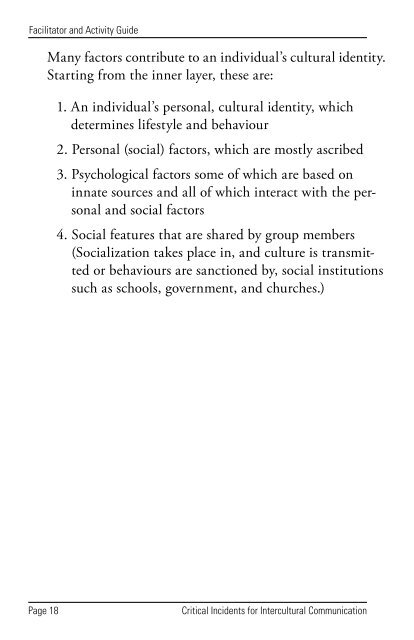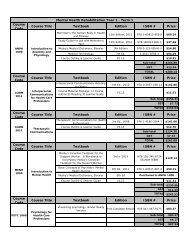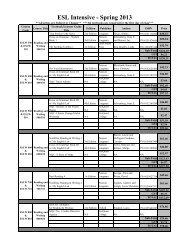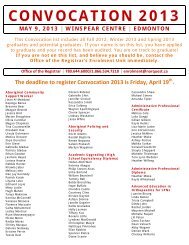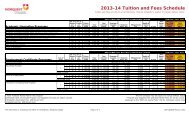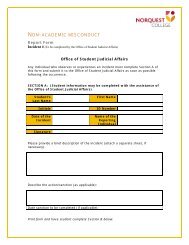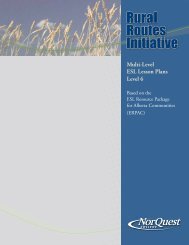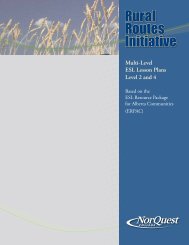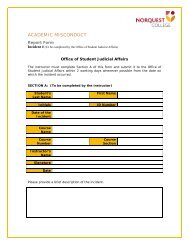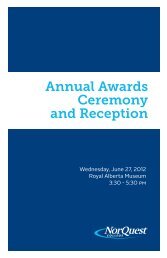Critical Incidents for Intercultural Communication - NorQuest College
Critical Incidents for Intercultural Communication - NorQuest College
Critical Incidents for Intercultural Communication - NorQuest College
- No tags were found...
Create successful ePaper yourself
Turn your PDF publications into a flip-book with our unique Google optimized e-Paper software.
Facilitator and Activity GuideMany factors contribute to an individual’s cultural identity.Starting from the inner layer, these are:1. An individual’s personal, cultural identity, whichdetermines lifestyle and behaviour2. Personal (social) factors, which are mostly ascribed3. Psychological factors some of which are based oninnate sources and all of which interact with the personaland social factors4. Social features that are shared by group members(Socialization takes place in, and culture is transmittedor behaviours are sanctioned by, social institutionssuch as schools, government, and churches.)“Who do you think you are?”Facilitator and Activity GuideThis model can take our exploration of culture as onion toa deeper level, inducing self-reflection and critical thinkingabout identity. After working with the vocabulary and concepts,hand out the following diagram and ask the participantsto identify which “groups” they belong to that makeup who they are. The facilitator should adapt the diagramto suit the issues and topics that he/she wants to address inthe classroom.FamilyPersonalityReligionNameEducationMarital StatusLanguagesSpokenPoliticalAffiliationIt is recommended that the facilitator also participate insharing her/his own cultural identity, again, to becomeaware of our own cultural assumptions surrounding identity.Next, participants can talk about their responses withtheir peers (in pairs, groups, jigsaw, etc.). This exercise canbe referenced later when you talk about stereotypes, prejudice,and discrimination. The facilitator can change thecategories (or leave them open) to whatever the topic andlevel of discussion and the willingness there is within thegroup to have such a dialogue. 66Example categories are sexual orientation, ability, age, gender (as socially constructed),race (again, as socially constructed), ethnicity (as self-identified), nationality (asdetermined by birth or self-identification), family roles, etc.Page 18<strong>Critical</strong> <strong>Incidents</strong> <strong>for</strong> <strong>Intercultural</strong> <strong>Communication</strong><strong>Critical</strong> <strong>Incidents</strong> <strong>for</strong> <strong>Intercultural</strong> <strong>Communication</strong> Page 19


